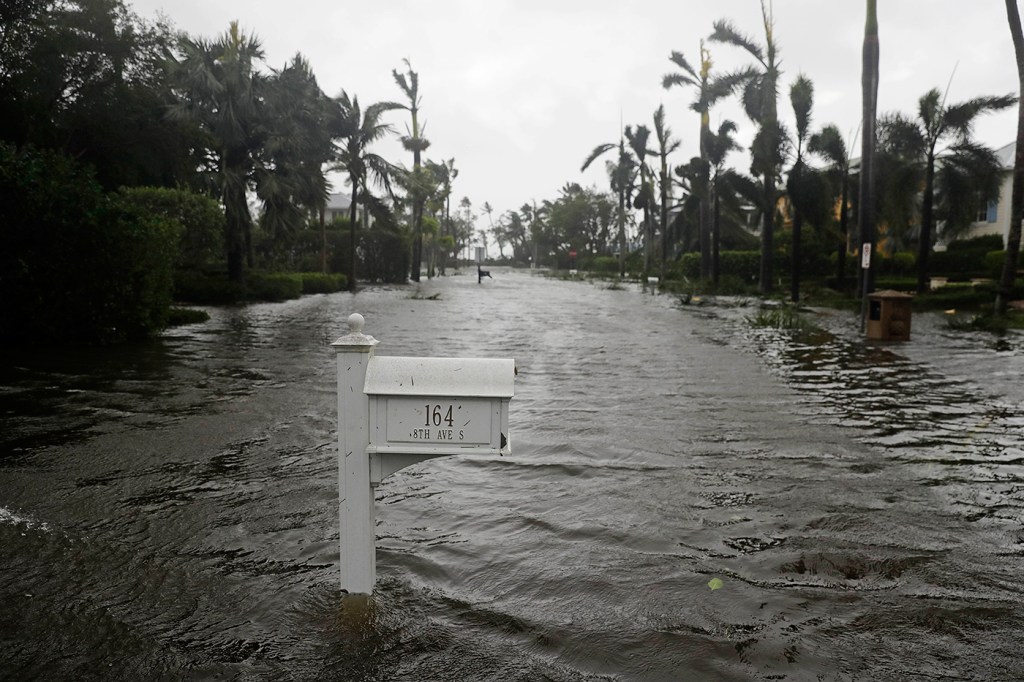Is extreme weather getting more extreme?

In the past month, Hurricane Irma devastated parts of Florida and several islands in the Caribbean. Hurricane Harvey tore through Houston and other parts of Texas and Louisiana. A magnitude 8.2 earthquake devastated Chiapas and Oaxaca in southern Mexico. Wildfires, strengthened by severe drought in the region, continue to scorch hundreds of thousands of acres of the Pacific Northwest. And floods have submerged entire cities in Bangladesh, India, and Nepal.
So, are bouts of extreme weather, like what we’ve seen in the past month, the new normal?
Because of the years of data required to make such a call, it’s hard to tell for sure, said Northeastern professor Auroop Ganguly, an expert in extreme weather and infrastructural resilience. What is clear, however, is that something needs to be done to boost preparedness for and recovery from weather catastrophes, he said.
When disaster strikes, the first and most important response is to triage: get people to safety, rescue those who became trapped, and then face the physical and emotional toll wrought by the disaster.
Is climate change to blame?
When there is this much devastation, it’s also wise to take a closer look at the causes behind it.
Ganguly—professor of civil and environmental engineering and director of the Sustainability and Data Sciences Lab—assesses extreme weather and resilience from a climate perspective as well as from an engineering perspective.
From the standpoint of the former, it’s difficult to say with certainty that any of the recent weather events are caused by climate change, he said. To make any such claim, he explained, one needs years and years of weather data.
All of these hazards turn into disasters not just because they’re disasters themselves, but because of things we do or don’t do. There’s an opportunity to do something here.
Auroop Ganguly
Professor of civil and environmental engineering and director of the Sustainability and Data Sciences Lab
There can be instances, though, where the weather is so extreme that, statistically, it would be more unlikely that climate change did not play a role. “In some cases, for something so extreme to happen without at least some exacerbating factor would be so low a probability that we think at least part of it (the weather event) has been caused by warming,” he said. “This particular type of study is very much in its infancy, however.”
Based on what scientists know now, the most recent bouts of extreme weather—earthquakes, heat waves, and drought, flooding, and hurricanes—can be correlated to global warming in varying degrees, Ganguly said. To start, “earthquakes have nothing to do with the climate, as far as we know,” he said. “This is truly just a random coincidence that we have this massive earthquake in Mexico right when we have Harvey and Irma.”
‘A clear pattern is emerging’: Heat waves and extreme weather
Increasing heat waves across the U.S. South and West are a different story, though. “The relation with heat waves and global warming is clear,” Ganguly said. “Even here, though, where there is much more confidence about their relationship with the climate, it’s hard to say that this event is definitely caused by climate change.”
Causation aside, warming can certainly exacerbate an already volatile situation, such as in the case of precipitation extremes. Higher air temperatures mean more water vapor can be evaporated into the atmosphere, Ganguly said. “More water in the atmosphere could result in more rainfall if the conditions are right,” he said.
Additionally, higher temperatures typically bring convective precipitation—a more intense, shorter period of rainfall. “Statistically speaking, if the temperature is higher, then the chances of something like this happening are greater, and you’d expect there to be more water in the atmosphere to drain out each time it does,” he said.
There is more uncertainty still with the correlation between drought and global warming, Ganguly said, adding, however, that “a clear pattern is emerging. The California drought is so extreme that there is the potential for a strong link,” he said, alluding to the type of outlier-extreme weather study mentioned earlier.
Hurricanes ‘may become even more extreme’
Similarly, there’s not a strong trend in terms of the frequency of hurricanes. If anything, Ganguly said, “there’s some empirical support that the overall frequency may decrease slightly in a warming world. What’s becoming more and more clear, though, is that the ones we do see may become even more extreme.”
Warmer oceans act as engines for hurricanes, revving them up. And if the atmosphere is warmer, there’s more water vapor in the air that a hurricane can pull down.
Extremes becoming more extreme is true of both ends of the spectrum, Ganguly said. “We may expect the frequency of cold snaps to reduce, but that doesn’t mean we can relax our preparation for that,” he said. “Over time, the cold snaps we do have may be more intense and longer lasting, if farther between.”
The damage any such hazard creates, Ganguly said, is only exacerbated by our increasing exposure and vulnerability to disaster. As coastal regions become more populous and infrastructure more interconnected, there becomes more risk for extreme weather to cause more damage.
“All of these hazards turn into disasters not just because they’re disasters themselves, but because of things we do or don’t do,” he said. “There’s an opportunity to do something here.”





